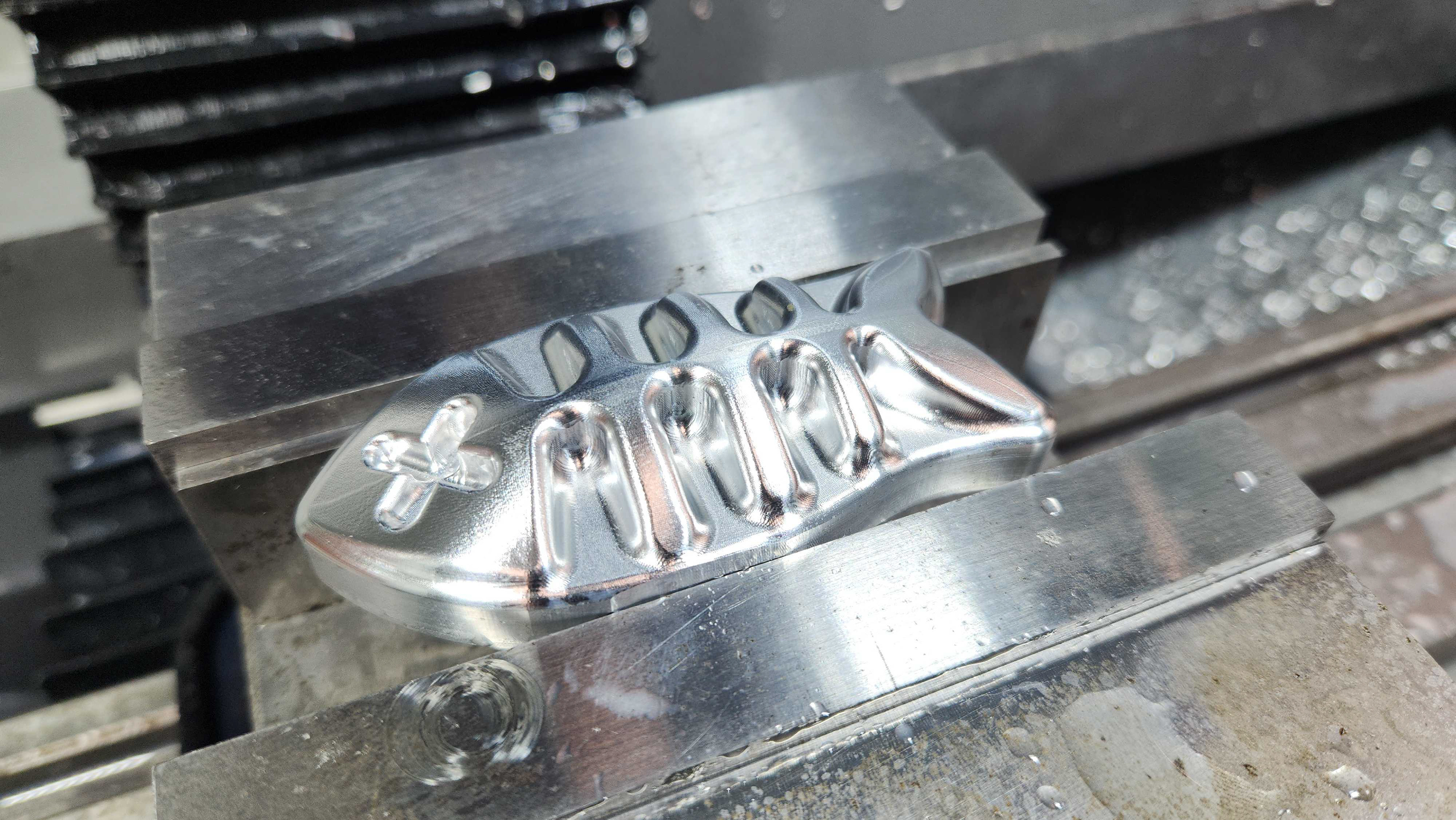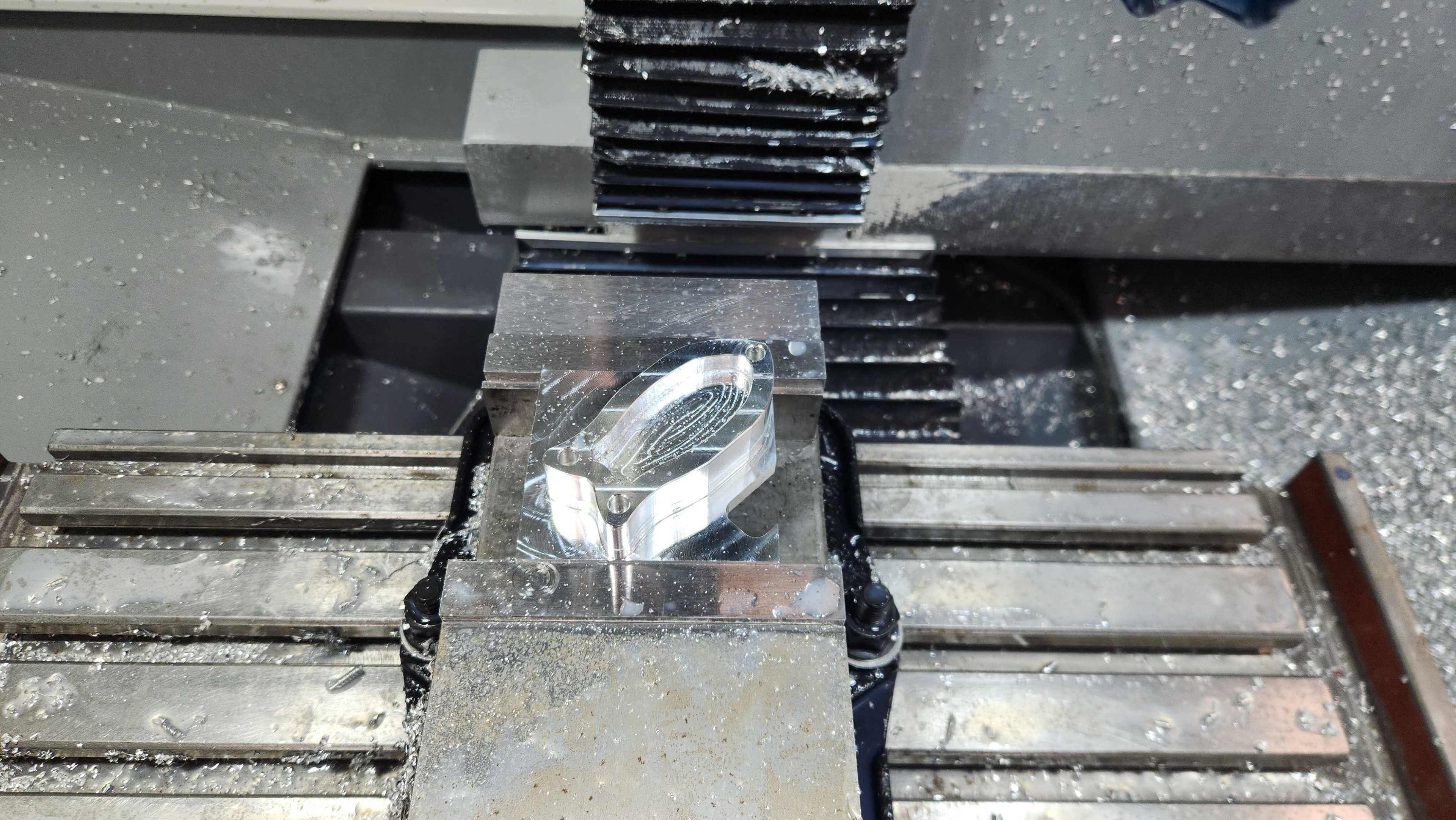The goal of this project was to create a CNC milled 2 part box following proper DFM principles to hold a small treasure. Additionally, I wanted to experiment with making a cool 3d contour on the top of the box while still attempting to minimize overall machining time. The idea was that the box itself would be the outer contour of a fish and the top surface would contain additional artistic details. The inner pocket is sized to hold a tiny tchotchke or piece of jewelry and contains 2 compartments. From an artistic perspective the goal was to achieve a bubbly, smooth, and cute design. The box uses three diamond pins to hold itself together and fits with a nice tight fit.
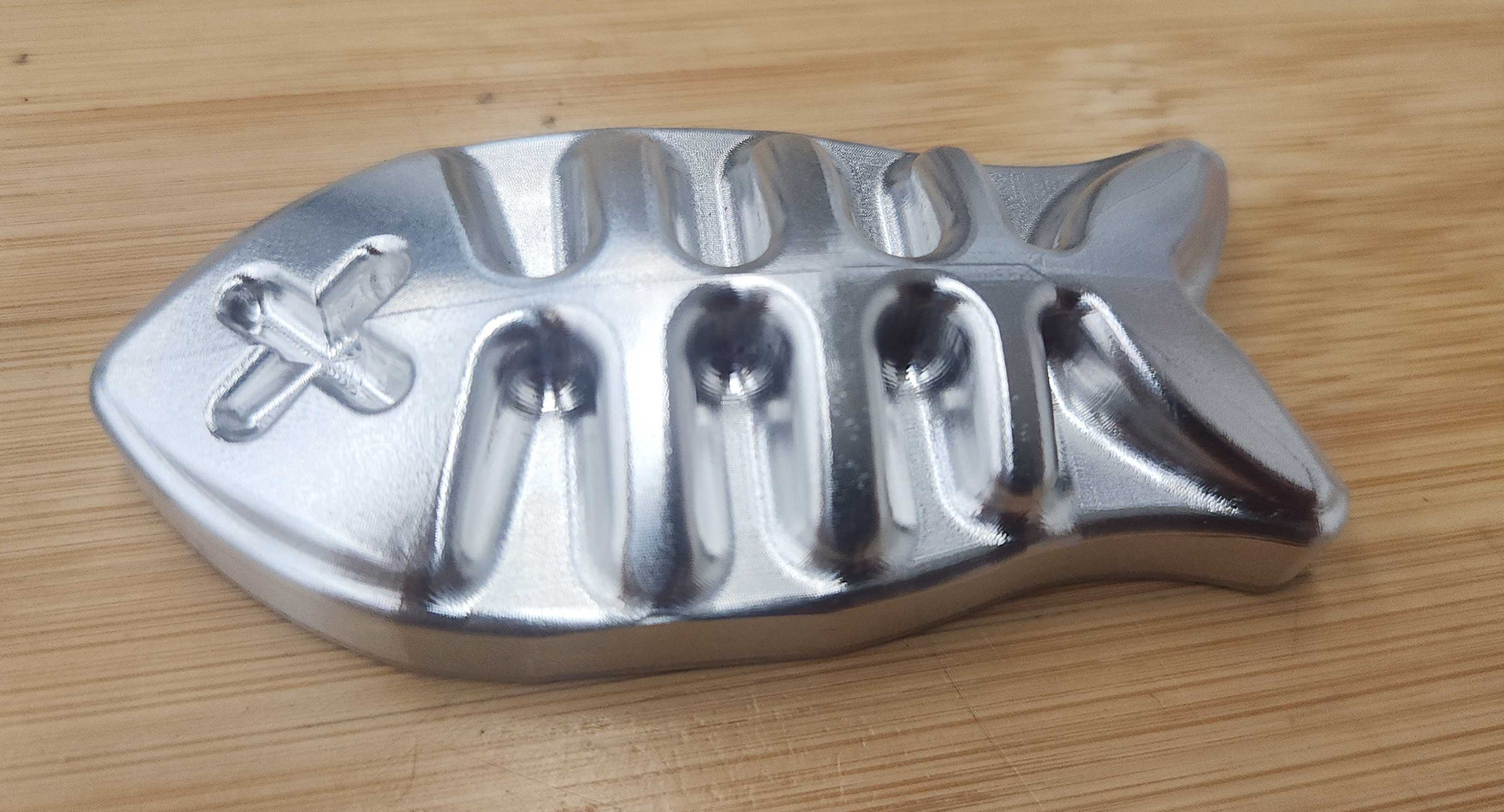

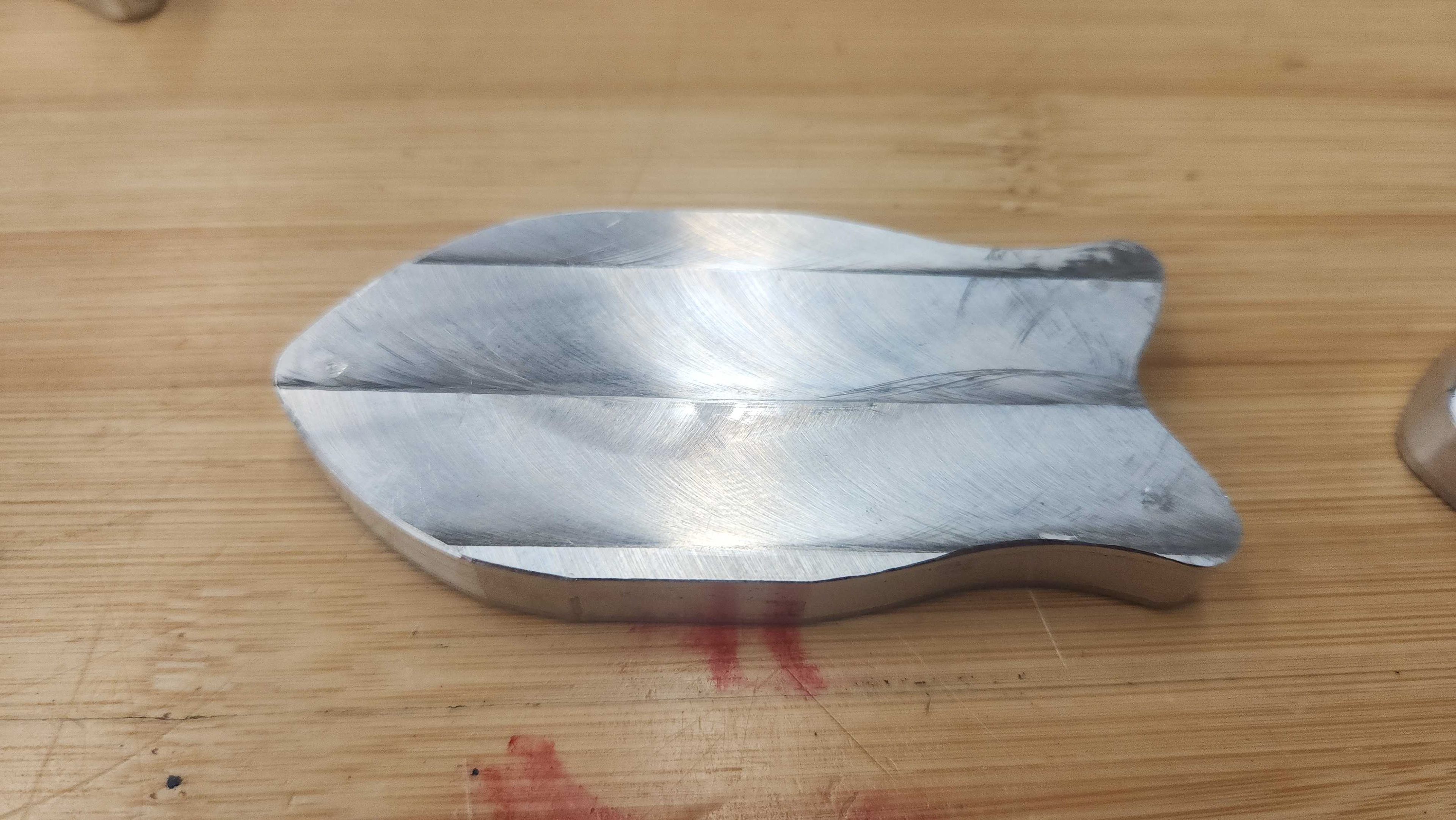
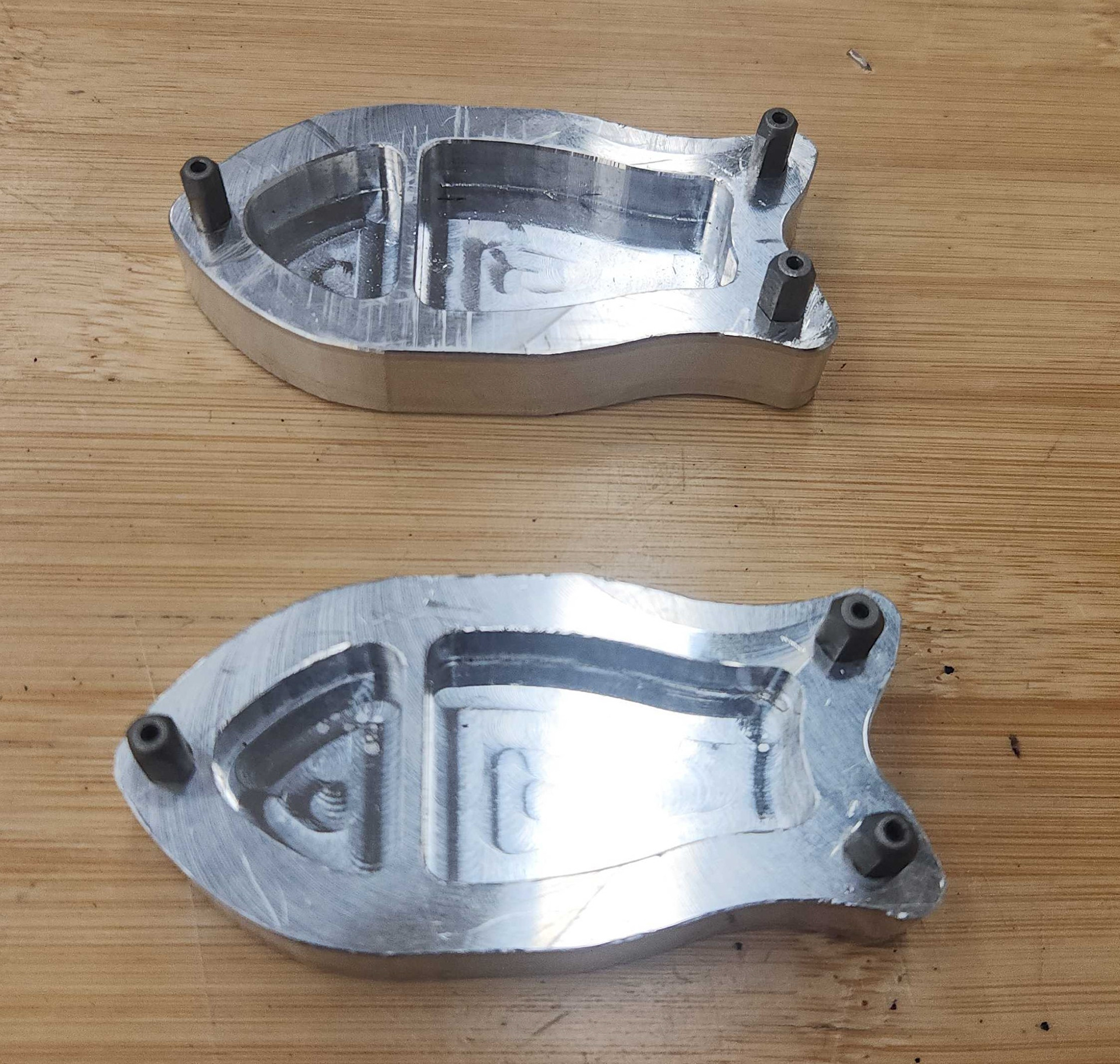
Throughout this project I developed a series of skills including generating g-code using CAM, operating a CNC mill (Tormach), tooling selection, speeds/feeds, and machining of 3d contours. During this process I was able to learn from many challenges and mistakes. One mistake I made was that I set the edge of the design I was machining out very close to the edge of the stock box in Solidworks. Especially since we didn't premachine our stock this led to ruined parts due to the angled cut on the stock cutting into the actual part. To fix this I started offsetting my origin by about 30 thousands from the actual edge of the stock. This helped make up for any variability in the edge of the stock.
Another interesting challenge was how to properly fixture and flip the fish top. There are no corners on the part so at first I wasn't sure how to accurately get an origin after machining the bottom and flipping the stock. Additionally the flats on the fish are rotated 45 degrees from the flats of the stock making it even more difficult. I solved this by machining an auxiliary pocket in the pedestal of the fish solely for the purpose of zeroing the second fixture.
The last challenge was properly getting the 3d contour on the top of the fish machined. The first time I ran the g-code I broke an 1/8 in endmill. This was because originally the g-code was clearing with a 3/8th in adaptive clearing pass followed by a 1/8th in morphed spiral. However, I discovered that the 3d morphed spiral operation I was using is a projected 2d operation and isn't smart enough to look at the depth of the stock and cut at depths when necessary. To make up for this I added additional adaptive clearing passes with a stock to leave for 20 thal, so the morphed spiral would only have to act as a finishing pass.
Now let's discuss the cost and cycle time of these parts. Based on the tools and power of the Tormachs available for use at Olin the parts can be made in a reasonable amount of time. The cycle time for the top part was optimized to 40 minutes. That means with setup and cleanup it can be machined in 1 hour or less. On the other hand the top part is machined in two setups with the first setup having a runtime of about 35 minutes and the second being 55 minutes. Thus, in an optimized workflow the top could be made in two and a half hours or less. An approximate machining cost was acquired from Protolabs. For the bottom part with economy processing the cost would be $221 for 1 part, $52 for 10, and $46 for 100. In comparison, the top is more complex and thus the cost is $332 for 1 part, $146 for 10, and $142 for 100.
BOM
Manufacturing Drawing
Exploded View
